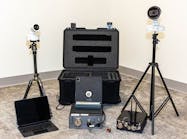By this time, nearly everyone involved in public safety should have heard of Next Generation 9-1-1. It’s likely that buzzwords among the dozens accompanying this technology have also crossed your path. Yet, as the implementation of Next Generation 9-1-1 approaches, there are still many common misconceptions about what it is and what it does.
While telephony is not likely to be covered extensively on a promotional exam, technology that will deliver the majority of public reports of fires and emergencies should not escape the gaze of the well-prepared fire executive. With that in mind, we examine four common myths about Next Generation 9-1-1.
Myth 1 – Next Generation 9-1-1 means being able to text in an emergency.
Well, yes – and no. A component of, and probably an early arriver of Next Generation 9-1-1, is the ability to send a text message in an emergency. This is important to the hearing impaired and to someone who wishes to stealthily report a crime in progress. But, Next Generation 9-1-1 doesn’t stop there. An entire multi-media suite of applications – including many not even invented yet – will allow the attachment of videos, photos and other data to the 9-1-1 report. (I use the word “report” because so much of this information will be non-verbal that I hesitate to call it a “call.”)
Would you like to know before you leave quarters on that extrication run that the car was travelling 80 mph, has three passengers and rolled over twice? Next Generation 9-1-1 holds promise to provide you with that data, as well as a call location, without anyone having to pick up a telephone.
Myth 2 – Next Generation 9-1-1? Isn’t that where 9-1-1 calls are delivered by the Internet?
Again, yes and no. Because Next Generation 9-1-1 will support a variety of devices and reporting mechanisms, some 9-1-1 reports will indeed travel over the Internet for a portion of their journey. But, existing conventional, wireless and Voice over Internet Protocol (VoIP) telephone networks and devices will not disappear overnight. Tying all of this together will be statewide or regional backbones connecting to local Emergency Service IP Networks (ESINets) that deliver the messages to local 9-1-1 centers. While these networks do use Internet Protocol, they are decidedly not the Internet. In fact, to function properly, they are secure voice-quality data networks provided by carriers or the governments and are not open to public commerce.
Myth 3 – Our dispatch center has a digital telephone system, so we are ready for Next Generation 9-1-1.
Just because a telephone system is labeled as “digital” or “VoIP” doesn’t mean it is ready for Next Generation 9-1-1. In fact, you would be hard pressed to buy an analog business-class telephone switch now. They are there, but much of the industry has gone digital. More likely is that your 9-1-1 center in its current form is not ready for Next Generation 9-1-1 in that it does not have all the bells and whistles required to translate and receive all (or maybe any) of the forms of communications associated with this new technology. Even something as seemingly simple (although actually complicated) as receiving text messages can require an upgrade. While some solutions use the current Telecommunications Device for the Deaf (TDD) functionality that is required to be present in every Public Safety Answering Point (PSAP), others do not. And it’s likely your dispatchers won’t find any buttons to push to receive photos, videos or crash notifications.
There is also a reasonable chance you are still connected to conventional 9-1-1 trunk lines, meaning additional interfaces will be needed when Next Generation 9-1-1 hits town. That is not to say some 9-1-1 systems are not capable of forward migration; but it is also fair to say many may need wholesale replacement regardless of their label. Computer-aided dispatch (CAD) systems, records management systems, recorders and mobile data terminals will also be called on in the future to collect, analyze, record and deliver these multi-media files.
Myth 4 – There’s no federally mandated date for Next Generation 9-1-1, so we have plenty of time.
This depends on your definition of “plenty of time.” In remote areas with difficult terrain, Next Generation 9-1-1 may be slower in coming. In more populated areas, however, the clock is ticking. Communities inIowaandNorth Carolinahave conducted tests of text messaging. AT&T is engaged in a statewide texting trial inTennessee, which is moving forward with a Next Generation 9-1-1 network, and other states have projects on the table. In fact, in 2011, the National Emergency Number Association (NENA) showed Next Generation 9-1-1-related work being done in all but 11 states. Industry experts suggest Next Generation 9-1-1 may be a reality for many within five years. For fire service planning and funding purposes, this is right around the corner.
Given the importance of 9-1-1 to emergency reporting, it is critical that every fire service leader recognize the technical, operational and fiscal impacts of the approaching migration to the Next Generation 9-1-1. Understanding the implications now provides sufficient time to act in order to prevent 9-1-1 itself from becoming an emergency in your community.
BARRY FUREY, a Firehouse® contributing editor, is director of the Raleigh-Wake Emergency Communications Center in North Carolina. During his 35-year public safety career, he has managed 911 centers and served as a volunteer fire officer in three other states. In 2005, Furey received a life membership in the Association of Public-safety Communications Officials (APCO) International for his continued work in emergency communications.






